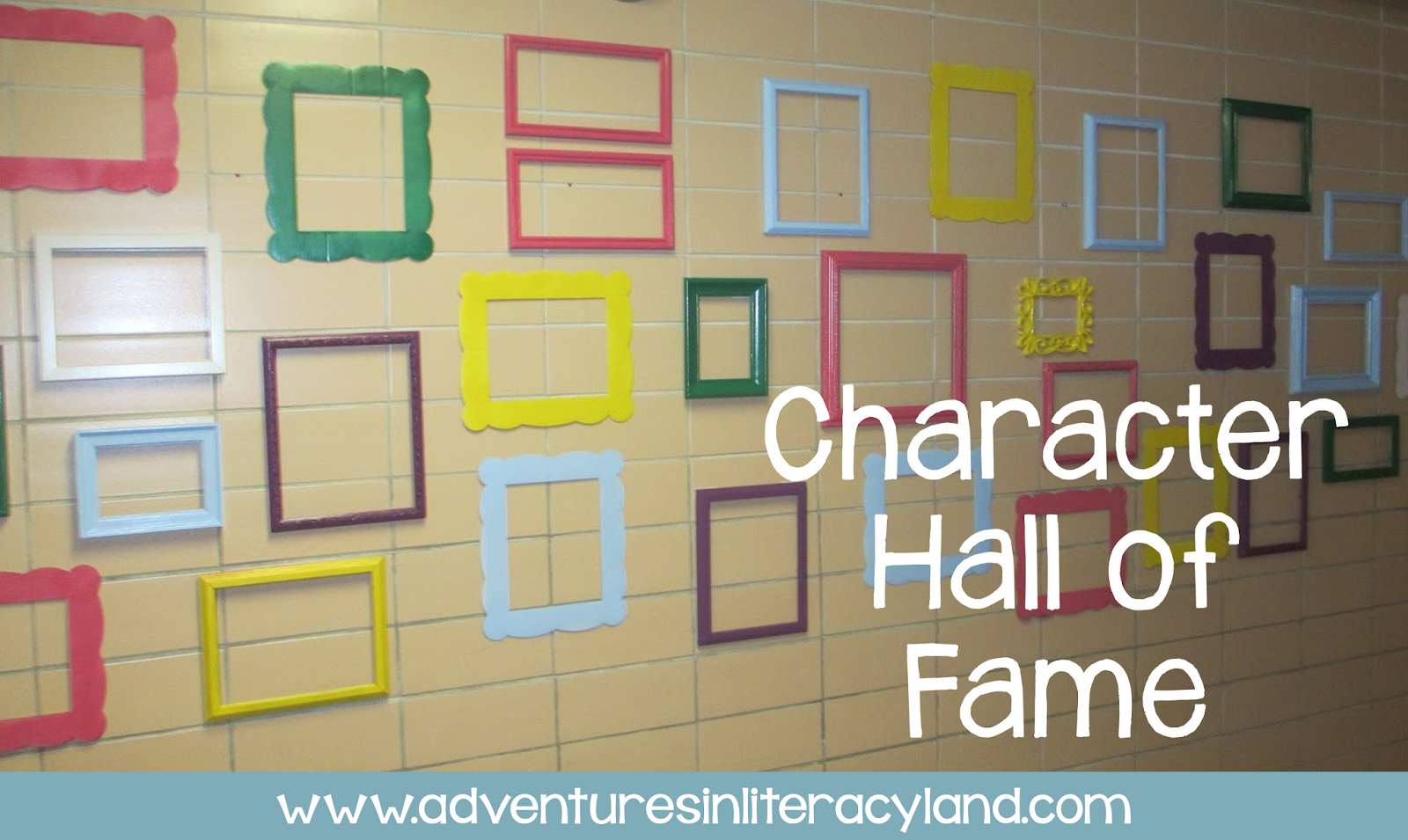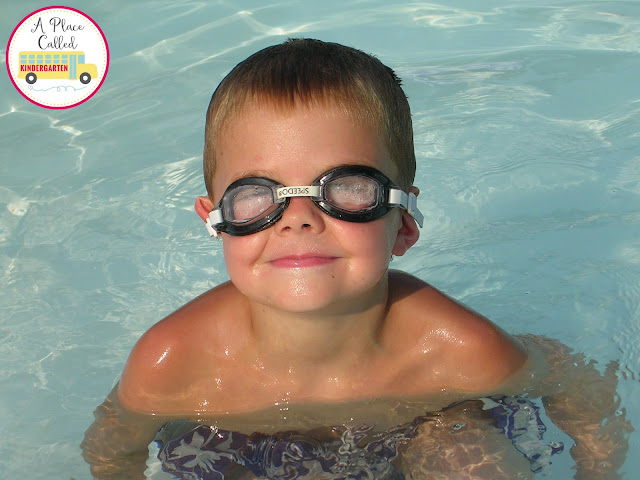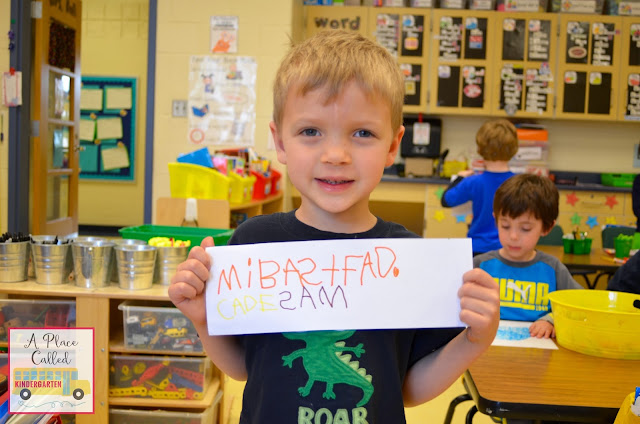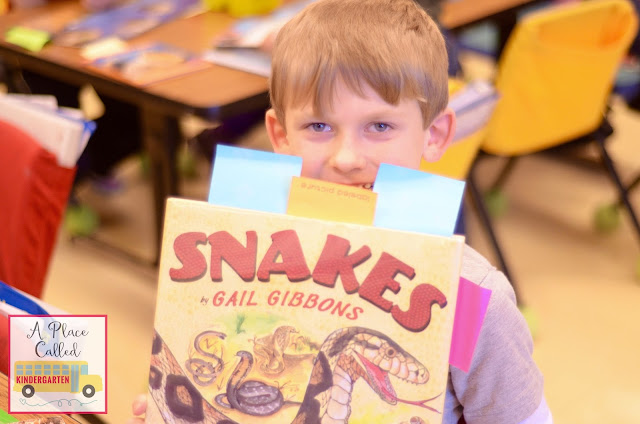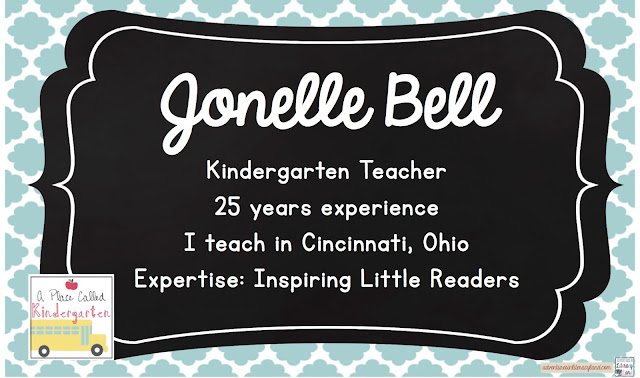Earlier this year I was intrigued by a blog post from Tammy over at Forever in First. She wrote about the book Moo! After checking it out myself, reading it to my students, watching my students read it over and over, I witnessed the power that one single word (plus punctuation) can have! And this only led to more books...
Adventures in Literacy Land: Reading
Showing posts with label Reading. Show all posts
Showing posts with label Reading. Show all posts

The Power of One Word
Earlier this year I was intrigued by a blog post from Tammy over at Forever in First. She wrote about the book Moo! After checking it out myself, reading it to my students, watching my students read it over and over, I witnessed the power that one single word (plus punctuation) can have! And this only led to more books...

Warm Up with Poetry: Making Your Poem of the Week Valuable
I have done a Poem of the Week for years. The poem helped cover many quick lessons during the introductory week and review lessons in the weeks that followed. The poem of the week were generally chosen or created to integrate another lesson in reading, math, science, or social studies.
More Winter?
2
More Winter?

Oral Storytelling with Picture Walks

Reading Ritual: Character Hall of Fame
Reading rituals...they are an integral part of our reading classrooms in order to create an environment for readers to be fostered, grown, and encouraged. They look different in every classroom and some rituals will have more impact than others.

Let Me Finish!
At about 4 years old, my daughter started to ask me if we were in a book. What an interesting question. At almost 8 years old, she continues to get lost in books, is constantly connecting personal experiences to events in books, and must be reminded often to close the book and brush her teeth! This love for books is something that we wish for all of our students.
At Nerd Camp this year I met Minh Lê, the author of Let Me Finish. I realized this book was written for my daughter and all of the other children that we want to get "sucked" into books. This is Minh Lê's breakout book and my, oh, my...there is a lot that we (as teachers) can do with it!
2
At Nerd Camp this year I met Minh Lê, the author of Let Me Finish. I realized this book was written for my daughter and all of the other children that we want to get "sucked" into books. This is Minh Lê's breakout book and my, oh, my...there is a lot that we (as teachers) can do with it!

Six Summer Reading Tips
 By the end of the school year Kindergarteners have started to figure out how to read for themselves. They are voracious learners that are thinking of themselves as readers. How can you keep them reading when they go from this reading environment...
By the end of the school year Kindergarteners have started to figure out how to read for themselves. They are voracious learners that are thinking of themselves as readers. How can you keep them reading when they go from this reading environment...
to this summer environment...
Children who read during the summer gain reading skills. Create a summer full of reading with these
six summer reading tips.
Go on Book Trips
Visit your local library or book store often during the summer. Make sure that young readers have their own library card and consider getting them a special book bag. Investigate summer reading programs at your local library and book stores. Sign up for a summer reading program.
Scholastic Summer Reading Program
Barnes & Noble Summer Reading Program
Half Price Books Summer Reading Program
Scholastic Summer Reading Program
Barnes & Noble Summer Reading Program
Half Price Books Summer Reading Program
Be a Reader
If kids see adults reading they will understand the importance of reading. My 8th grade son and I still love to read side by side, especially during the summer. This summer I have been reading in these fun pajama pants.
Schedule Time to Read
Swimming, camps, sports events, vacations and many other activities are fun things to do during the summer. It is important to help young readers fit reading into their busy summer schedule.
Environment Full of Books
Make sure that early readers have a variety of reading materials on hand. They need their own copies of stories that they love along with a combination of informational text and storybooks or early chapter books. Subscribe to a children's magazine to give little readers something to look forward
to reading every month.
to reading every month.
Read Together
Summer is a great time to read a chapter book to your little reader or practice your storytelling skills. Improvise with different character voices to
make stories come alive.
make stories come alive.
Be a Rainy Day Reader
The best thing to do on a rainy day is to read a book. Make a list of rainy day books so that you are ready when the clouds roll in.
Happy Summer Reading!
Happy Summer Reading!

Making Decoding Strategies Automatic: 3 Easy Steps
Hello, Everyone. This is Cathy from Cathy Collier's The W.I.S.E. Owl. I am a reading specialist in a K-2 school. I do both pull-out interventions and coaching, but have a soft spot for my pull-out kids. Two of my students this year are first grade students diagnosed with a "learning disability." (My undergraduate degree is in special education, so you know I love them.) They are the highlight of my day...and I won't deny I'd love to teach them all day!
When we started in late fall, these two were on a Level B and as of March they were moving into a Level D. THEN, we hit a wall. The D to E wall. E seems to be the time when students are faced with lots of long vowel words, blends and digraphs, and word endings. Here's what I know: they can decode almost any word, IF I ask them questions and guide them.
For example, If they come to the word "gate."
Me: What do you know?
Justin: There is an "e" on the end?
Me: What does that mean?
Justin: The "e" makes the "a" says it's name.
Me: So, what is the word?
Justin: /g/ /a-a-a-a/ /t/, gate.
Me: Great job!
8
When we started in late fall, these two were on a Level B and as of March they were moving into a Level D. THEN, we hit a wall. The D to E wall. E seems to be the time when students are faced with lots of long vowel words, blends and digraphs, and word endings. Here's what I know: they can decode almost any word, IF I ask them questions and guide them.
For example, If they come to the word "gate."
Me: What do you know?
Justin: There is an "e" on the end?
Me: What does that mean?
Justin: The "e" makes the "a" says it's name.
Me: So, what is the word?
Justin: /g/ /a-a-a-a/ /t/, gate.
Me: Great job!
What can I do?
My greatest challenge is getting the students to have their own internal dialog when using decoding strategies. After a conversation with my Assistant Principal, we decided to try and practice the automaticity of the decoding strategies. What does that mean? I want them to come to an unknown word and think strategy first. I have always "taught" and "practiced" the strategies, but I'm taking it one step farther.
1. Play "Slap Jack"
I created a strip of the 3 strategies they seemed to need the most. I chose 1 known and 2 unknown strategies. We had been using CVC Sliders to practice our "slide and sound" with cvc words. They have gotten pretty consistent with that strategy, so that became their "known" strategy. The second strategy was the silent e "making the vowel say it's name (most of the time)." We have talked about this strategy, but they needed concentrated practice with it. The final strategy was "chop the endings." We covered up or "chopped off" the endings to look at the base word for decoding. To begin, I wrote 5 words for each strategy on an index card and when I flashed the card, they had to "slap the strategy" they would use to decode the word. THEY DID NOT DECODE THE WORD. This wasn't a decoding lesson, it was a strategy lesson. We played this game for a week. I let them sit side-by-side and slap the strategy together, but by the end of the week it was a race. I wanted the strategy to be automatic. The video below is Justin identifying the strategy for me. (He said he didn't want to slap it, if it wasn't a game. He thought he looked silly doing it alone.)
I hate that the video doesn't show all the strategies, but you get the idea. By the end of the week, he was pointing to the strategy and saying the name of it. That's what I want: automaticity.
2. Sort
Part 1, we sorted with the cards from the week before. I gave them the cards to sort under the strategy mat. Yes, I should have made the cards smaller. Lucky for you, I made small cards for you at the end of the post. They would sort the cards as quickly as they could, then they would "prove" the cards belonged in that column. They are still not reading the cards, they are just choosing a strategy. Part 2, was a sort sheet. This was an independent activity at the end of the week, but the students were still asked to "prove" the word belonged. I also wanted to send a sample of a competed sort home to their parents.
3. Read.
Finally, we read sentences I constructed with multiple strategies in each sentence. As they came to an underlined word, they touched the strategy on the mat and then decoded the word. They did a great job. My favorite moment was when looking at the word "running" Justin said, "After I chop the ending, I can see a word to "slide and sound." WOW...that's a moment, if you ask me.
I made a Decoding Strategy FREEBIE set for this idea.

Already Ready
Years ago a friend of mine would host soup nights. She would make a few pots of soup (her mom’s beef stew was my favorite), the kids would run around and the adults would visit. Flash forward a few years and we were all too busy with our growing kids to have soup nights, but one of my soup night friends wrote a book about Preschool and Kindergarten writers. In 2008, Matt Glover published his first book with Katie Wood Ray. This book, Already Ready Nurturing Writers in Preschool and Kindergarten changed my teaching and classroom writing environment forever. Ray and Glover believe that children do not need to “get ready” to be readers and writers, but that they are already readers and writers. They believe that writing may be a better way to lead children’s literacy development than reading. I have found this to be true in my classroom.
Ways that writing has made my Kindergarten students
become better readers…
Kindergarteners will write books about topics that interest them. When you present children with mentor texts that they can make connections to, they will write about their own experiences or knowledge and want to have that book in their book box.
The writing workshop model builds stamina for writing and reading for long periods of time. The more they practice writing and reading the better they become at writing and reading.


Using invented spellings transfers to confidence and phonetic skills that students use to stretch out words when reading.
It is difficult to make something if you don’t know anything about what it is you are trying to make. Developing an understanding about texts gets students excited about literature and gives them a deeper understanding of stories and how to write them.
Sharing the books children have made with others builds fluency skills and allows children to express their intended meaning…and they are reading.
When children buy into literacy activities it makes others want to join the club even before they know much about reading and writing. Our littlest learners are already ready to be writers and readers. It is our job as teachers to inspire, support and lead them in the right direction.

Reading Between the Lines
Typically my teaching takes place in a small group format. That is the life of a Title I teacher...and I love it! But there are a couple weeks within the school year that my teammate, Karen and I, co-teach together. This past week was one of them.
We LOVE Tanny McGregor's book, Comprehension Connections and many of the lessons that we co-teach begin with her ideas. Tanny's chapter on inferring sparked the most recent lessons with our first graders. She lays out some great ideas about bringing in trash and shoes to infer. The anchor charts that are recommended are great visuals. We found great success when we used these lessons last year.
To put these new inferring skills to work, we ended each lesson with a book. Since we teach first graders, we wanted to choose books that would help them to feel successful with inferring. Wordless books by Lita Judge, as well as, some alphabet books were both used this year.
My focus today is on the alphabet books because they can be a great place to start when inference, evidence, and schema are first being introduced.
These four titles: A Is for Salad, Q is for Duck, Tomorrow's Alphabet, and A is for...? all encourage students to "read between the lines" in order to understand what the author is trying to say. For each of these books the students need to use their schema and evidence from the letters/text or pictures to determine what the alphabet letter actually stands for. Our questions for each page:
2
We LOVE Tanny McGregor's book, Comprehension Connections and many of the lessons that we co-teach begin with her ideas. Tanny's chapter on inferring sparked the most recent lessons with our first graders. She lays out some great ideas about bringing in trash and shoes to infer. The anchor charts that are recommended are great visuals. We found great success when we used these lessons last year.
To put these new inferring skills to work, we ended each lesson with a book. Since we teach first graders, we wanted to choose books that would help them to feel successful with inferring. Wordless books by Lita Judge, as well as, some alphabet books were both used this year.
My focus today is on the alphabet books because they can be a great place to start when inference, evidence, and schema are first being introduced.
These four titles: A Is for Salad, Q is for Duck, Tomorrow's Alphabet, and A is for...? all encourage students to "read between the lines" in order to understand what the author is trying to say. For each of these books the students need to use their schema and evidence from the letters/text or pictures to determine what the alphabet letter actually stands for. Our questions for each page:
What can you infer?
What is your evidence to support that?
Our first graders would also include schema or background knowledge into their answers and we would point that out immediately as we referred to the evidence within the book.
Tomorrow's Alphabet by George Shannon
This text is really interesting because the students have to think about what the object will become in the future. For students that do not have a lot of schema on that particular object, they have to rely heavily on the evidence within the pictures. Here is an example:
I would show only the page that states "C is for milk--." My question was, "What can you infer the author means by C is for milk?" I loved this because some students wanted to immediately answer, "Cow-milk comes from a cow and cow starts with c." Then I would remind them that the title is "Tomorrow's Alphabet" and that piece of evidence tells me that this milk will turn into something. This prompted more inferences about cake, cookies, or cupcakes because the milk may be part of the batter.
Yes! Yes! The evidence is there and so is their schema!
But then I show them that the author actually decided upon the word cheese.
The book continues on in this manner. Some answers require more thinking, schema, and evidence than others. It is interesting to see what they come up with for some of the letters.
Q Is for Duck by Mary Elting and Michael Folsom
This text relies on the schema of students but there is evidence with the pictures to help them infer what the letter ACTUALLY stands for.
On this particular page, my classes inferred that the "F" actually stood for feathers, feed, fly, and flamingo. Each of these inferences were backed up by evidence from this page and their schema on what they know about birds.
When we showed the next page, we covered up the answer just to see if they would change their inference based on the new evidence shown.
And the new evidence led them to infer that "F" actually stood for fly. They were correct!
A is For Salad by Mike Lester
This text provides the evidence for what the author is inferring on one page, where the two books above use two pages. For this reason, I believe this book is a bit easier and would be perfect to use with kindergarten students or beginning of the year first graders.
As you can see from this illustration, the author is not talking about pajamas. We can infer that the E really stands of an elephant because we see an elephant in the illustration.
A is for ...? A Photographer's Alphabet of Animals by Henry Horenstein
This text has even less text for students to use as evidence. They must use a lot of schema, the beginning letter, and the photograph to help them infer what the author is really trying to show them.
Students must look at the photograph (such as the one above) and try to figure out what animal it is. That is it. I have to admit...I fell in love with this book the moment I saw it. The photos are beautiful.
Reading between the lines or inferring is a skill that students do everyday. They do it when they see your "teacher look" or when they get dressed in the morning. The tricky part for us as teachers is getting them to understand that they also do this when they read. AND that they use evidence throughout the book to make those inferences.
My hope is that some of these alphabet books can help our youngest readers begin to infer and provide evidence when reading.

Inspiring Little Readers
Hi! I am Jonelle Bell from A Place Called Kindergarten. I teach Kindergarten in Ohio and am a mom to 3 sons. (Both rewarding and challenging jobs.) I am excited to be joining Adventures in Literacy Land as it celebrates turning 2.
I look forward to sharing my love of literacy with the readers of this blog.
My expertise comes from 25 years of teaching and learning from little readers. There is no greater joy as a Kindergarten teacher than to watch 5 and 6 year olds gain the skills needed to become readers. From phonemic awareness, alphabet knowledge, concepts of print, listening comprehension, vocabulary to decoding and comprehension every milestone is a cause for celebration.
(Read more about these skills in Jessica Hamilton's post HERE.) The list of skills little readers need to build a reading foundation is long, but they also need to think of themselves as readers and make connections to books and authors to fall in love with reading.
We start the year off with establishing reading routines at home and at school. At the beginning of the year many Kindergarteners do not think of themselves as readers and reading may not be a part of their routine at home.
Here are some things that I do to inspire my little readers...
Develop Family Reading Routines
It is important for early readers to spend time reading and being read to. One of the first things that I do at the beginning of the year is help parents understand the importance of making reading a part of their daily routine. Read to Your Bunny is a great book to read during your parent information night at the beginning of the year to establish the importance of nightly reading.
"Read to your bunny...and your bunny will read to you."
Create an Interest in Characters and Authors
I have a huge book collection in my classroom. Most of the books go untouched until we spend some time reading about a character, learning about an author and making connections stories. Then...watch out...there becomes a frenzy for that character or author book box.
-keep your book area organized by your students' interest
-make finding books and putting books away manageable
-keep a list of characters and authors displayed and make connections to them
Make Connections to Books
Connecting 5 and 6 year olds to stores, characters and authors make for some interesting conversations. I had a conversation with a student about how he is afraid to go to sleep at night, but is making a plan just like Scardey Squirrel does to help him fall asleep. Priceless!
Read Favorites Again and Again
Both at home and at school you need to read little readers their favorite stories again and again and again. During read to self I love hearing retells of Goldilocks or Pigeon stories, especially from my struggling learners. They are able to do this because we have read those stories several times.
Readers and Book Lovers
I call my students readers and book lovers all throughout the year after we establish what it means to be a community of readers and book lovers.
A community of readers is a place where children...
-want to read every day
-refer to themselves as readers
-choose books thoughtfully
-handle books carefully
-share favorite books with their peers
I love teaching literacy skills and inspiring my little readers!
It is my hope that they will leave Kindergarten with the confidence to continue to think of themselves as readers and book lovers as they continue to grow in the area of literacy throughout school.
Subscribe to:
Posts (Atom)




